What Makes the Perfect Deer Rifle — PT 2 The Rifle Itself
In the previous missive, I examined what makes an ideal deer rifle from the perspective of chambering.
The answer was “Yes, one of those will do nicely.”
Now, I’m going to start getting into the real meat of it. What action? What length?
The answer is still the same: “Whatever works.”
Look, I’ve built my preferences over 40 years. If you start now, in 40 years, you will probably come up with some radically different answers. One guy is going to be a lever nut. The next guy will have a nice AR-type MSR. Someone else may be carrying a flintlock.
So this is just another waste of time, Shaman?
No. They all work, given the right circumstances.
Let me begin with action. Perhaps you will see what I mean.
I like bolt guns. There is nothing particularly fancy in my reasoning.
- They are easy to clean.
- They are easy to make accurate
- They are cheap to own
- They hold more than one round
Let’s pull this apart a bit using bolt guns as an example.
Cleaning: A bolt gun can usually be field stripped just by removing the bolt. No tools needed.
Accuracy: Because they are so darn simple, folks can generally make them shoot bugholes without much trouble
Cost: A $300-$400 buys you all you need these days
Capacity: 3-4 rounds is all you need– usually for a whole season.
Speed: This is where the bolt action stumbles. You have to mess up your cheek weld to jack another round in.
Comparison to a Lever-Action - Cleaning: I can truthfully say I have never completely disassembled any of my lever-action rifles.
- Accuracy: My Savage 99 is my most accurate lever. It’s close to my best bolt gun, but not quite there.
- Cost: There are a lot more parts to a lever– that’s a lot more manufacturing costs.
- Capacity: Pretty much the same as my bolt guns
- Speed: Some guys can get pretty fast cranking a lever. It is certainly handier than a bolt gun.
Comparison to a Single-Shot - Cleaning: Simpler
- Accuracy: Can be about the same as a bolt gun
- Cost: The cheaper ones can be still as good as a bolt gun for accuracy. The expensive ones have their own cult
- Capacity: One is the loneliest number.
- Speed: I know the extra rounds-in-the-fingers-trick. Try it and get back to me.
Comparison to a MSR or any other Semi-auto - Cleaning: AR platforms are easy, but not as easy as a bolt. Other designs can be downright devilish
- Accuracy: No flies on most MSR rifles. Some other semi-actions can be a tad wild.
- Cost: Much more expensive
- Capacity: Endless. However, after 3 rounds, who cares? Kentucky only allows 10 round magazines. It’s okay, though. The deer are not shooting back.
- Speed: This is where an MSR or any Semi shines.
Comparison to Pumps - Cleaning: If you think a pump-action shotgun is easy to clean, then a pump-action rifle is easy.
- Accuracy: My Rem 7600 is easily as accurate as a Rem 700– same barrel
- Cost: Not bad
- Capacity: Usually the same as a bolt gun.
- Speed: You can rack a Pump fast than a lever and almost as fast as a semi if you’re good.
But does any of this matter? No. Pick what you like and deal with any problems. The deer are not going to mind.
The biggest sticking point for me is the magazine. Looking back over the years less than 7% of the whitetails we have shot at our camp required a finisher. My last one was in 2006. The point is when you need it, you need it. When I first got involved in the sport, I thought having 4 rounds in my Remington 742 semi or 3 rounds in my 12 GA Rem 1100 was just plain necessary. I went a decade without needing to fire a second shot. In the early 2000’s, I had a couple of years there where everything needed at least two. Thankfully that jinx went away. I still think that a second shot is key. I always try to make it. It is just that almost all the time my sights come back to rest on 4 hooves in the air. Do I endorse a single-shot rifle for whitetails? No.
Okay. Somewhere in all this, you’ve picked your platform. Now what?
Fit: Fit figures into so much. I’ve been lucky to be born with long arms, big hands, and a big head. Not much flat-out doesn’t fit. However, there is a huge difference between my Length-of-Pull from early season to late. I literally have a whole second battery for the last few days of season when I’m wearing extra layers in the cold. Some rifles just don’t fit. I can’t get my eyes down on the sights.
Fit also figures into felt recoil. I have a couple of rifles that I actually removed the recoil pad to shorten the LOP and made them less punishing. Why? It moved my cheek weld forward and I stopped getting punched in the face. Having a rifle that fits figures into so much.
Sights: I’ve got bad eyes that lend me to shy away from open sights. Other guys prefer them. At some distance, you will find whitetails are easier to hit with a scope.
Barrel length:
There’s as much as 100 fps difference for every inch or two take off a rifle barrel. Read the fine print on your ammo box. The test data was derived from a test barrel that is much longer than what you’re carrying. The good news is that it doesn’t matter. Whitetail deer do not notice if they have been shot at 2700 fps or 2600fps. The general rule is that shorter barrels work well for treestands and ground-pounding. Longer barrels are better for longer ranges and long sits in one place. You want a rifle that balances well. Short barrels are loud. Long barrels catch on clouds and cause it to rain. Just checking to see if you’re paying attention. We’ve still got a lot to go through.
Recoil:
35 Whelen was my high-water mark for recoil. Don’t get me wrong, I can still shoot whatever I want. I just figured out that 35 Whelen was the most recoil that was worth it to kill a deer. After I figured that out, I retired my 35 Whelen for almost a decade, because I realized a 30-06 was getting the job done with a lot less muss and fuss. You do not need to be punished to kill a whitetail deer. That whole WSSSSSSSSSMMMM thing back in the 2000s was useless vis a vis whitetail deer. It’s like Dad told me when I was 5 and he was trying to show me how to use a shovel: “If it hurts, Son, you’re probably doing it wrong.” Also remember that as a deer hunter ages, recoil can become more of a problem. Some of that is injury and infirmity, and some of it is just age. Pursuant to that I made stopped buying 30-06’s in 2014 when I was 56.
Camp Culture:
There are choices we make that have more to do with the guys we hunt with than anything else. Everybody at camp is carrying 44 Mag. You decide to bring a 444 Marlin just to one-up them. I’m with you. I have to say that it was pretty cool to have complete strangers walk up to me and ask me how big the buck was; they could tell I’d taken a shot because everyone knew the report of my Whelenizer on the neighboring ridges.
Mystique:
You’re talking to the shaman here. This is right in my wheelhouse. Only I can’t tell you what’s right. I can only tell you that you need to listen to your heart. Most days I’m in a wood stock mood, but when it rains, I have my rain gun. For reasons that are not quite rational, I have carried the same Savage 99 into the same treestand waiting for The Big One to return for nearly 2 decades. If you’ve got your Grandpa’s 30-30 or Dad’s 270, there is no way I’m going to be able to tell you that it is not the right choice. I had Bob’s Model 44 up in the stand with me last season, and it was the voices inside my head that told me to take it. Those voices are stronger than anything else I write. I have a M1 Garand that needs to get out again. It’ll remind me Jerry and John. I have O.T’s 25-06 Mauser that’s whining to get out of the closet again. Yes, I’ve got ghosts in gun cabinet the same as you.
Other Stuff:
I have a decided preference for wood stocks, and I have some rifles that really light me up when I’m holding them. However, they stay home when it rains. I don’t want to deal with a warped stock or wreck a finish. Conversely, I shy away from plastic stocks, but they are hard to escape nowadays. I always thought laminate was heavy and ugly, but I bought a Boyd’s stock for my Ruger American Predator, and I’m really warming up to it. The bottom line is that stock material is more a matter of personal preference. You know what you want; go for it.
One reason I like used deer rifles, is they come pre-dinged. One of the hardest things to face is that first scratch or dent you put on a rifle. If you get one that has a couple already on it, then it is not so bad. I especially like the dings put on by dead friends.
Metal: I like stainless because it is easy to keep clean. Carbon steel is easier to manufacture and bluing is not so bad. I stay away from Cerrokote and the other fancy finishes, just because if I do put a ding it, it’ll be hard to get out. That goes double for those dipped camo finishes. Scratches are forever, guys! If I were going that way, I’d just as soon spray the barrel and action with Krylon and do a DIY finish that I could repair on my own. My turkey gun is that way. It’s been that way for over a decade. If the scratch is too bad, I just spray over it. Just remember, the first time you spray a rifle, nothing worse will ever happen to it. I bought my first MSR over the winter and it came already rattle-canned. What’s not to like about that?
This post has already been read 463 times!
Views: 1
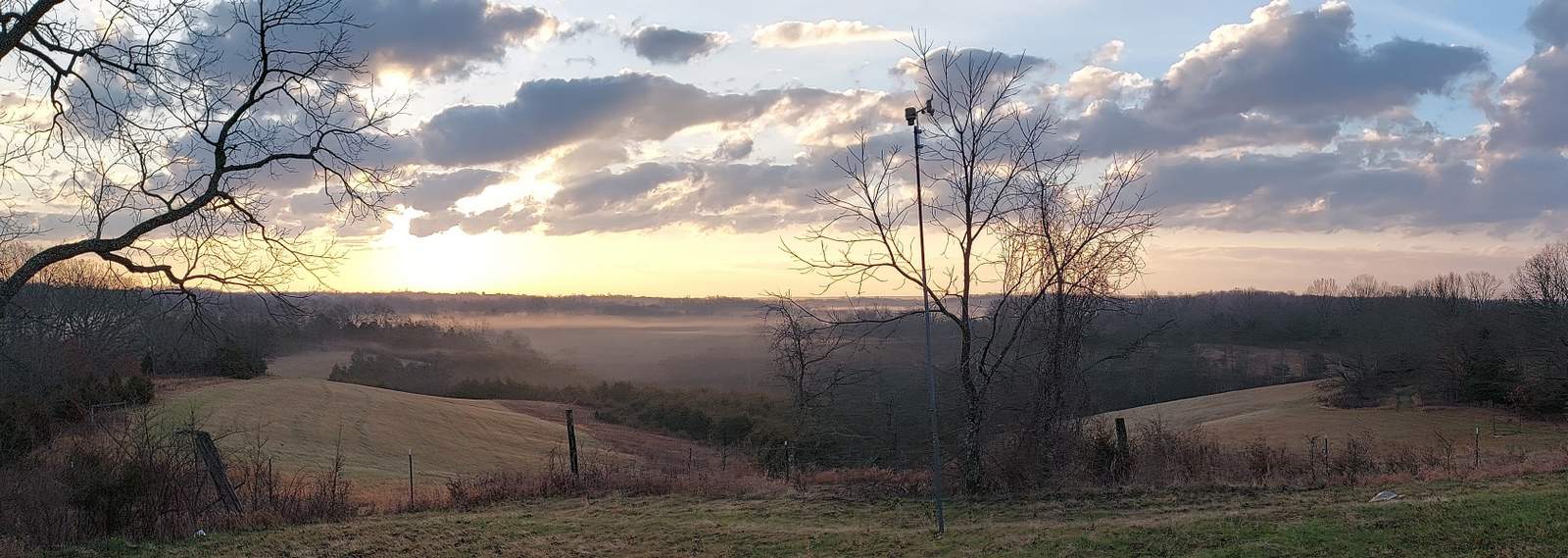
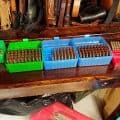
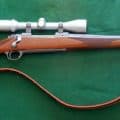
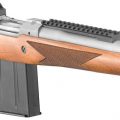
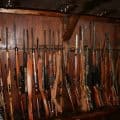

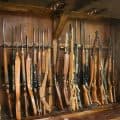
Comments
What Makes the Perfect Deer Rifle — PT 2 The Rifle Itself — No Comments
HTML tags allowed in your comment: <a href="" title=""> <abbr title=""> <acronym title=""> <b> <blockquote cite=""> <cite> <code> <del datetime=""> <em> <i> <q cite=""> <s> <strike> <strong>